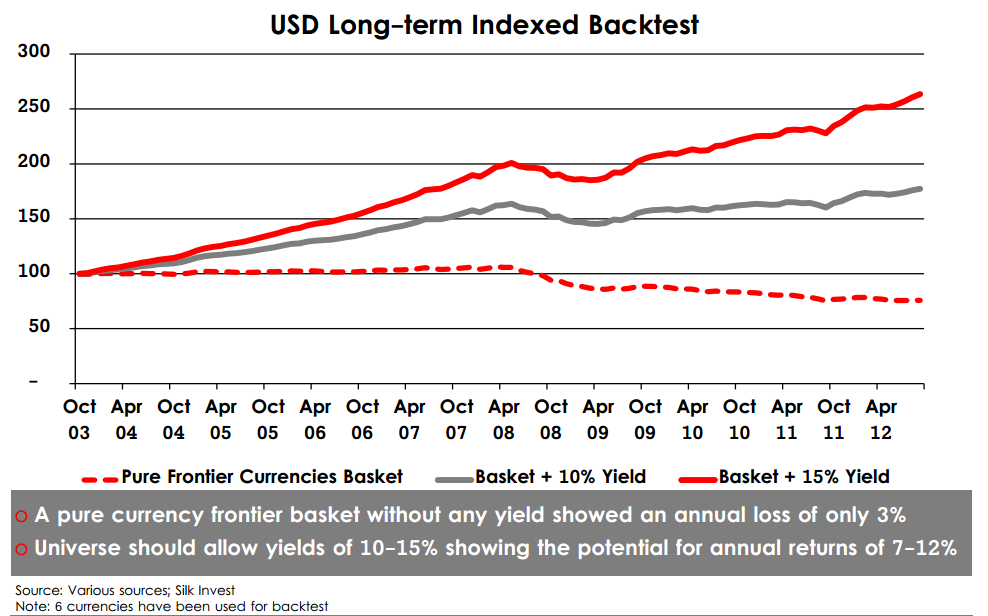Frontier v Markets for Diversification
Post on: 12 Август, 2015 No Comment

How to Decide Between Frontier & Emerging Markets
You can opt-out at any time.
Investors have many different options when diversifying internationally, including both developing and developed countries. Frontier and emerging markets are two subsets of international investments that offer greater returns at a greater risk than many developed markets in Europe or Australia. In this article, we’ll take a look at how to decide between the two when diversifying a portfolio internationally.
What’s the Difference?
Frontier and emerging markets consist of developing countries that offer greater potential returns at a higher risk than traditional developed economies. After all, it’s easier to double US$1 billion in gross domestic product (“GDP”) to US$2 billion than a $1 trillion economy to $2 trillion, even though both of these represent the same 100% growth rate for international investors involved with the countries.
But, who decides when a country moves from frontier to emerging market status?
There is no universal definition of what constitutes a frontier market. but several prominent financial organizations have generated their own lists. For instance, MSCI has designated 33 different countries as frontier markets, with 24 of them included in its MSCI Frontier Markets Indexes, as of August 2014. These frontier markets are located across the Americas, Europe, Africa, the Middle East, and Asia.
In general, frontier markets are considered to be the riskiest countries in the world for investors with few investors, limited infrastructure, and in some cases, no functioning stock market for liquid trading. Investments in these markets are therefore relatively illiquid, nontransparent, and subject to political risk, currency risk, and high transaction fees that investors should carefully consider.
The trade-off for these increased risks are greater potential returns and a low correlation with developed markets, especially for frontier markets.
Comparing the ETFs
The easiest way to invest in frontier or emerging markets is using exchange-traded funds (“ETFs”) that provide instant diversification, targeted exposure, and a decent amount of liquidity in a single U.S.-traded security. As the largest provider of ETFs in the world, iShares offers a number of frontier and emerging market ETFs that provide an easy comparison of the differences between the markets.
iShares MSCI Frontier 100
- Net Assets: $758,123,147
- Number of Holdings: 128
- Expense Ratio: 0.79%
- Equity Beta: 0.45
- Largest Holdings: Kuwait (21.9%), Nigeria (13.44%), Qatar (12.14%)

iShares MSCI Emerging Markets ETF
- Net Assets: $42,653,910,828
- Number of Holdings: 837
- Expense Ratio: 0.67%
- Equity Beta: 0.9
- Largest Holdings: China (18.25%), Korea (15.32%), Taiwan (11.76%)
The frontier and emerging market ETFs appear to have fairly predictable differences on the surface, with the frontier markets having a higher expense ratio. fewer holdings, and fewer net assets. In general, international investors can expect the same kind of dynamics when looking at other frontier and emerging market ETFs, mutual funds, closed-end funds, or similar types of securities.
Perhaps surprisingly, the equity beta of the frontier markets is lower than the emerging markets, which could be due to the frontier markets’ concentration within the oil and gas industry. International investors should analyze individual ETF, mutual fund, or closed-end fund portfolios to look for these types of characteristics that may appear to contradict conventional wisdom in some cases.
Alternatives Investments
International investors seeking more specific exposure to frontier or emerging markets can use American Depository Receipts (“ADRs”) to simply invest directly in the foreign market of choice. When it comes to these options, however, there are several key differences between frontier and emerging markets that should be contemplated before committing any capital.
- Liquidity. Frontier markets have less liquidity than emerging markets, and in some cases very little liquidity at all, which means that international investors should be sure to account for liquidity risks .
- Transaction Costs. Frontier markets often have higher transaction costs than emerging markets, which means that foreign investment accounts may be subject to greater transaction fees and/or taxation-related costs.
Key Takeaway Points
Frontier and emerging markets provide international investors with a great way to increase diversification and long-term risk-adjusted returns. That said, investors should be mindful of the differing dynamics of frontier versus emerging markets and the unique risks that differentiate them from developed markets, especially when investing in individual ADRs or foreign securities.














